
For this iteration of moth madness I’m up in Bear Prairie, elevation about 1100’, on the outskirts of a sort of neighborhood about 10 miles northeast of Washougal. I’m right near the Clark/Skamania County line, so some of these moths tonight may have originated in Skamania County. But they chose to come worship at the Temple of Ultraviolet I’ve erected on the Clark County side of the line, so they’re fair game. It’s 74⁰ at 8:45, which is the time this part of the planet rotates out of view of the sun. There is, thankfully, almost no wind, (I’m set up on an asphalt turnout at the end of the county road, so they’ll be no staking down the tent anyway) and skies are clear.
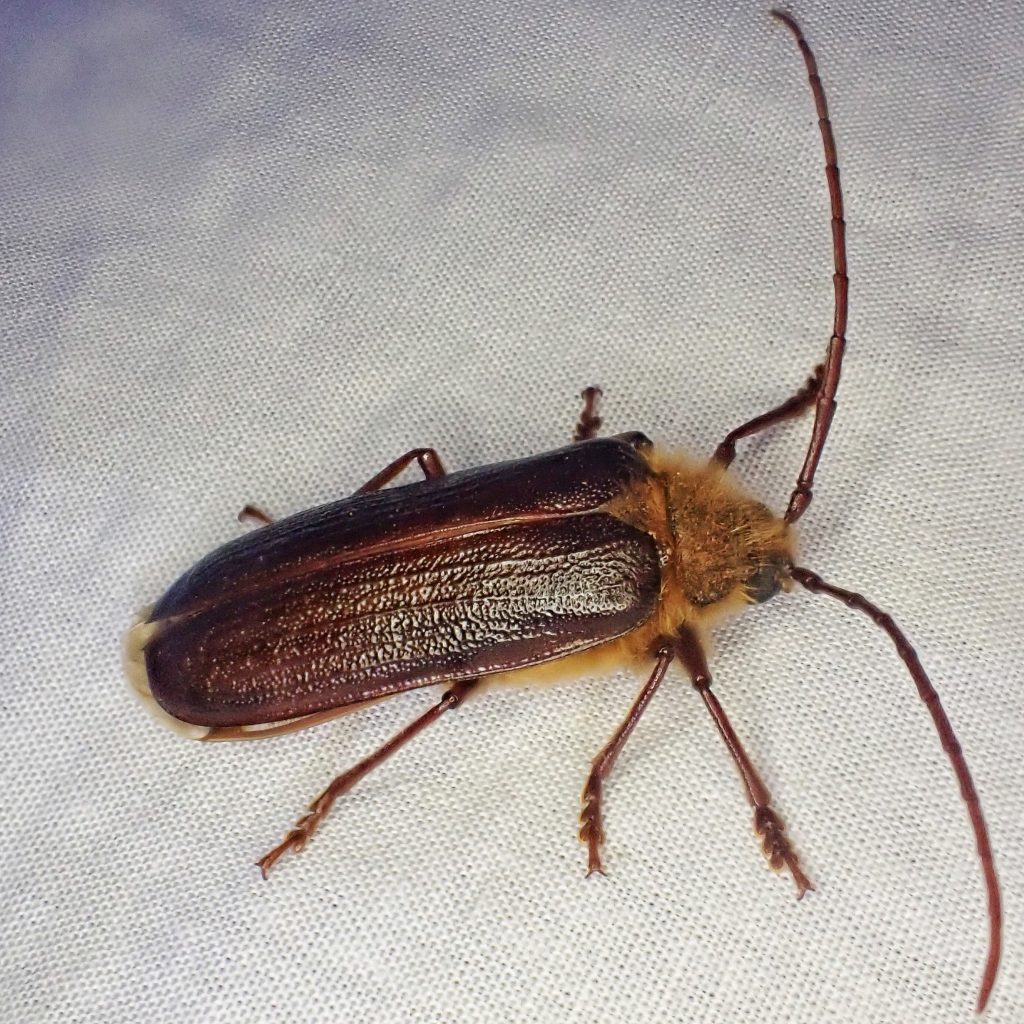
To the east of me is a clearcut that’s in the process of rejuvenating, though from what I can see it’s a monoculture of Doug-fir. But around the perimeter are many alders, blackberry thickets, and weeds and weedy shrubs as well as a bunch of that blasted scotch broom. South and south west is a wetland, but I’m not sure what’s growing there because it’s private property (as is the clearcut to the east). To the west, on DNR land, is a fairly mature second growth forest that is mostly Doug-fir, but also has some western hemlock, western red-cedar, alder, vine and big leaf maple, and some willows near the fence line bordering the wetland.
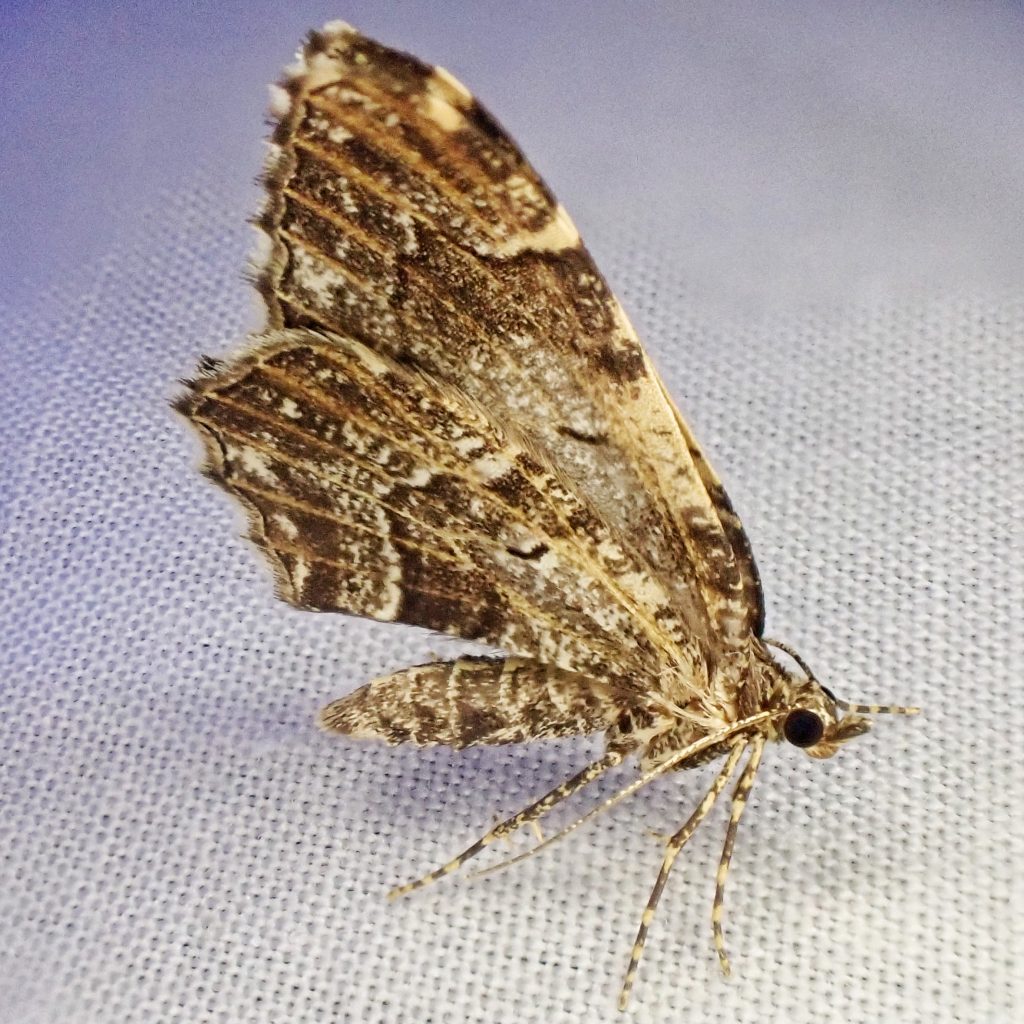
When I first started mothing here 4 years ago the clearcut was freshly scalped, and there was a lot of dirt showing. But now there is a cover of green over its entirety, and it’s not so sad to look at. But even then, next to what appeared to be a wasteland, this was a very good spot to find moths, and it is still one of only two places (Canyon Creek being the other, which is where I’ll be mothing Sunday night for the finale of Moth Week) where I have found over 50 species in a night. So I’ve got high hopes for this evening.
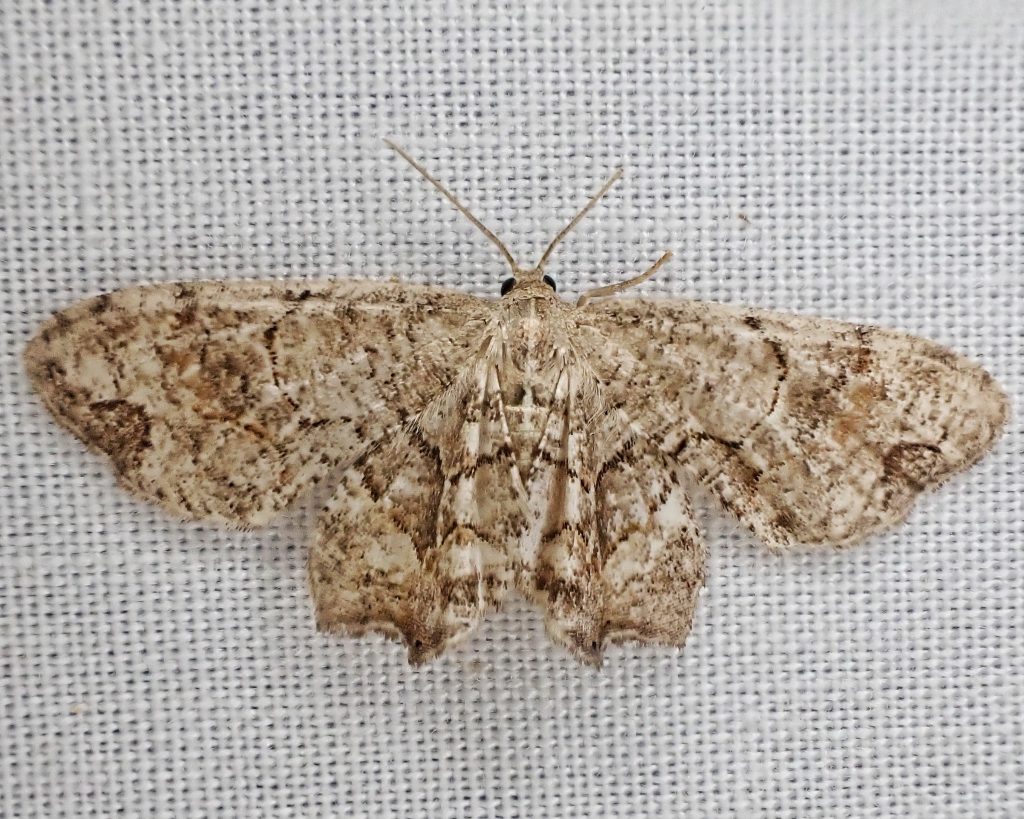
9:34- I’m starting to get some moths coming in, but they aren’t settling down. Many moths flutter around the area for a bit, then flutter around the light for awhile, before perching on the sheets. I just had what I assume is a local landowner check me out before hanging a u-turn and heading back toward the houses. I often get that here, and I’m always happy to explain what I’m doing, but they seldom ask, although it’s obvious I’m not camping because my moth tents would provide very little shelter. Just had some kind of nighthawk glide by, but so far I’ve seen no bats.
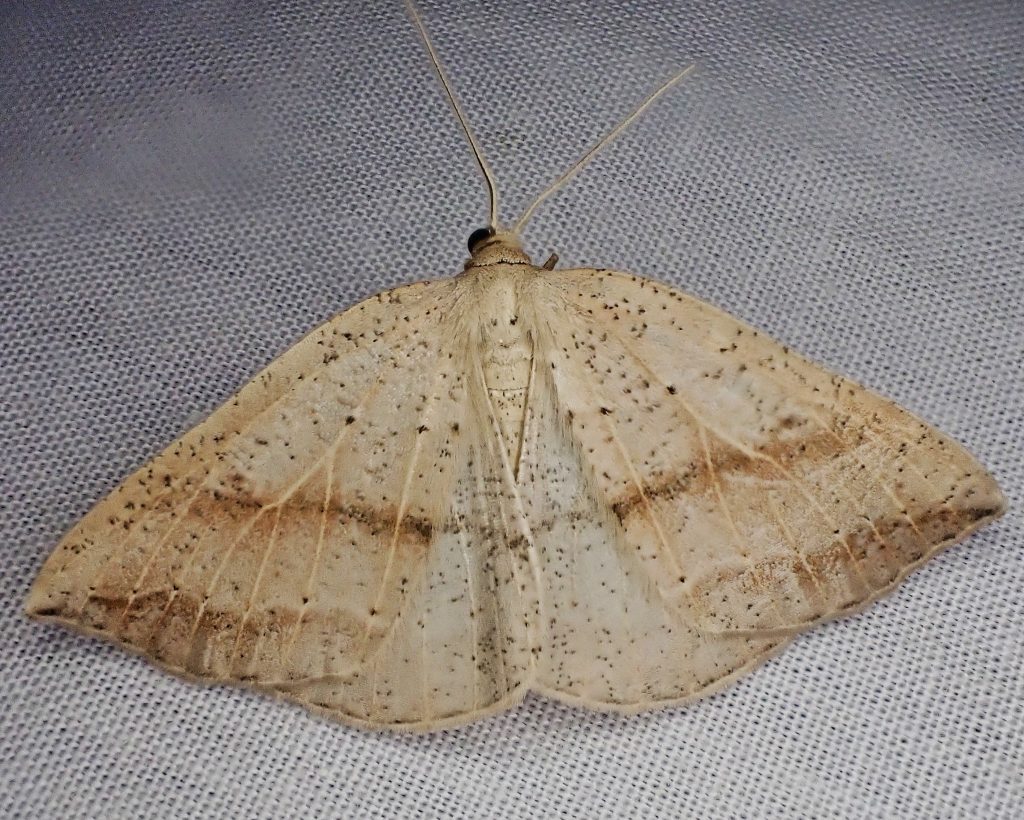
10:18- Starting to get going now. Just found one of the big Tragosoma (hairy pine borer) longhorn beetles, and there have been at least a half dozen moths that are new for this tally. Because of the elevation and clear skies the temperature has already dropped to 59⁰, but these are montane moths and they are used to cooler nights. I should still have action as long as it stays above 50⁰
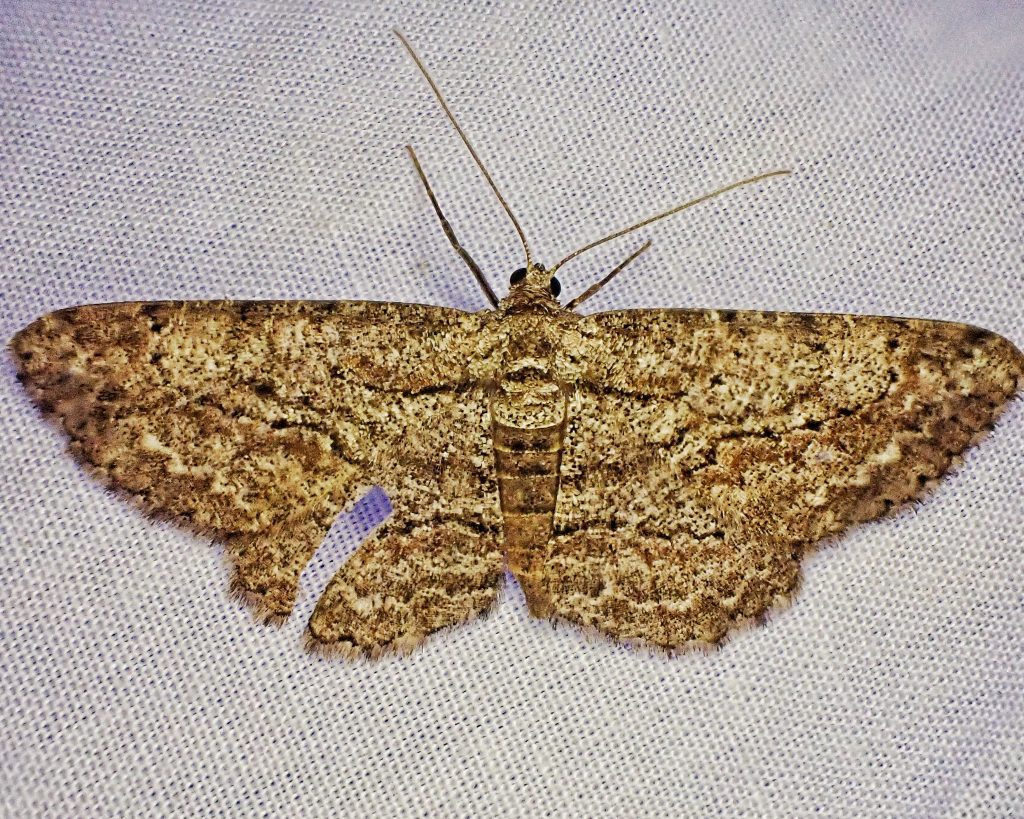
10:45- It still hasn’t really gotten going here, although I have gotten 10 species, and only three of those are not new for the tally. But except for three Pero mizon, and three Macaria signaria, they’ve all been singles. The thing is that on previous nights in this location, with very similar temps, by this time I would be having to walk and kneel very carefully in the sheet area to avoid squashing my little buddies, and the sheets would be well dotted. I have been competing with a 3/4 moon, and it’s about to go behind the trees. It’s possible they air dropped broadleaf herbicide on the clearcut recently, and there are signs along the road saying they sprayed Roundup about a month ago, although they’d have tried to be relatively precise with the Roundup because it’s a nasty general herbicide that could kill the trees. Whatever the reason, there are probably only 10-20% of the moths that I’m used to seeing in this locale.
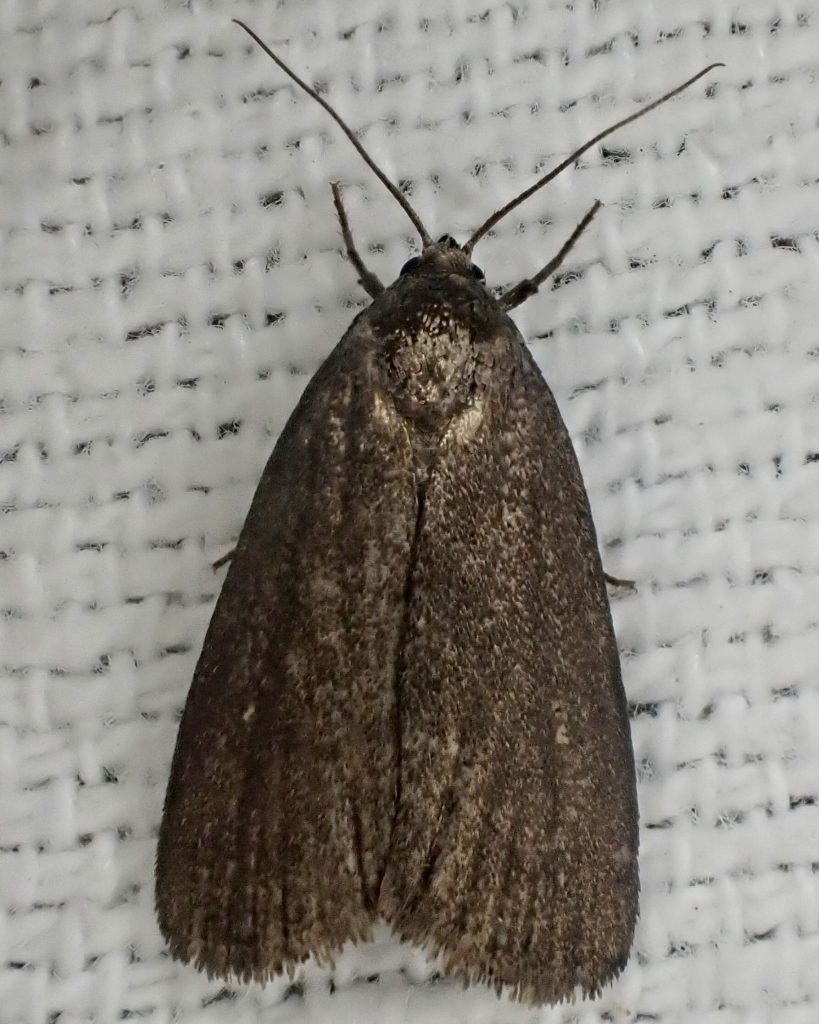
11:30- Only one new species since my last check, although there are now at least a half dozen Pero mizon. I think I finally learned that I need a different approach to a project like this Moth Week tally as opposed to finding things to profile, and that is that I need to decide as I’m finding them what I want to profile, and what I’m just trying to document, because I try to get at least 10-12 photos of anything I’m going to profile, which adds up quickly over the course of an evening, especially when you add in the ones I take home to photograph there. There have been a few days recently when I had over 300 photos to process (download, crop, edit, and organize) before I could even start to try and identify them. Tonight I’m trying to keep it to 100 photos, which will take around an hour and a half to process.
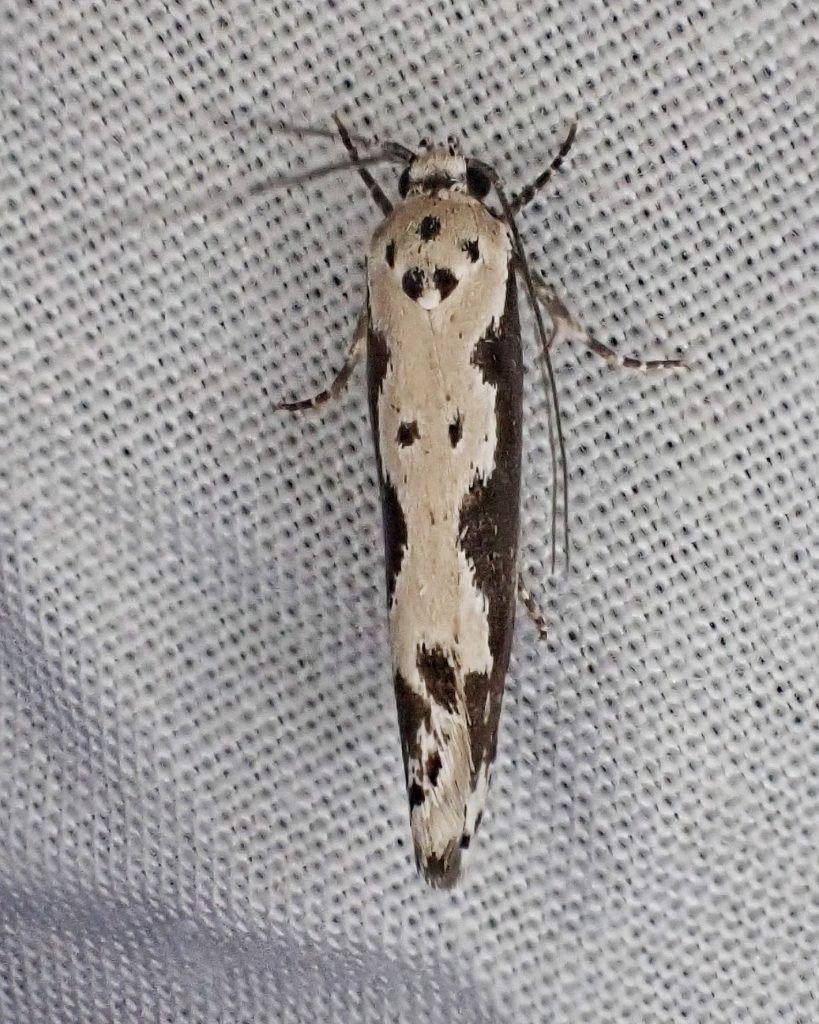
12:28- It’s down to 50⁰ now, and there was nothing new when I just checked the sheets, so I think I’m gonna tear down. And I gotta say, I’m kinda with the bugs on this, because apparently I’ve acclimated to summer heat, and 50⁰ seems pretty chilly in short sleeves.
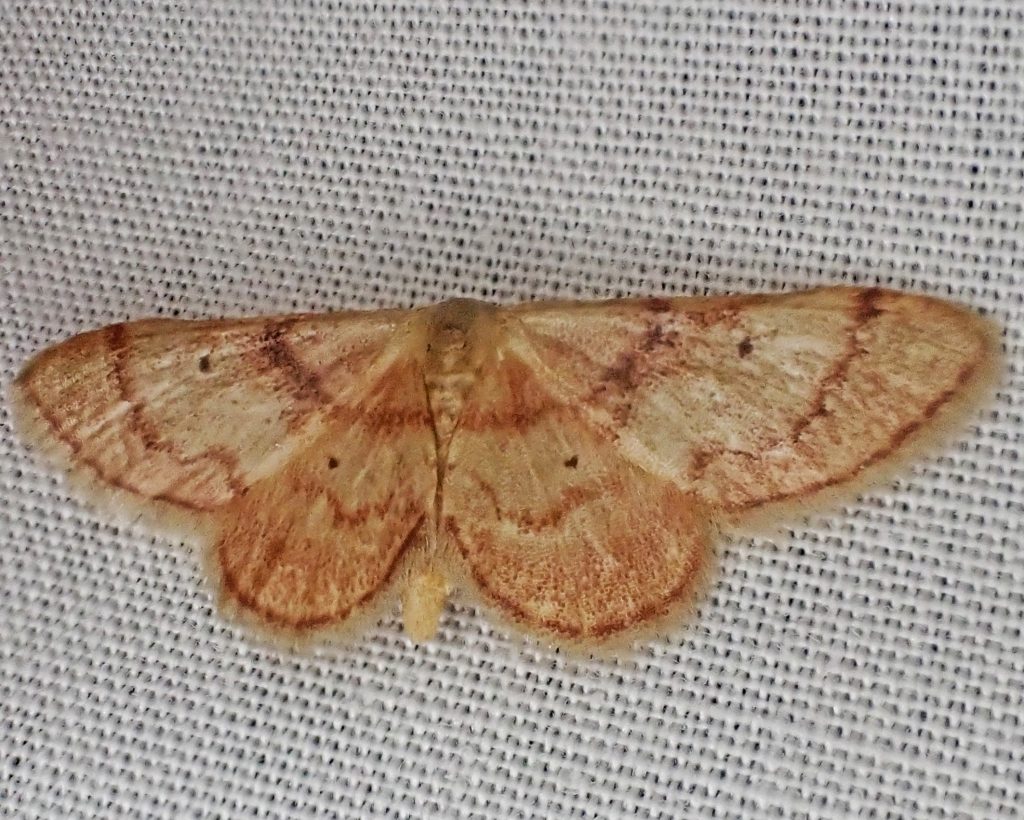
1:05- As often happens I found a couple moths hiding in the folds, one of them being the only Panthea virginarius (Cascades Panthea) I’ve seen tonight. And I just want to clarify- this was a great evening for me. I love just being out here looking at the stars and finding cool bugs. My earlier comments were not because I am actually disappointed with what I did find. They are just puzzlement at why there weren’t as many arthropods as there usually are, which leads me into fear that this massive reduction of insects that many have been noticing, a reduction in numbers caused by the greed, ignorance, and shortsightedness of humanity and by ridiculously poor stewardship of the only planet that we know to be habitable in the Universe, a reduction so drastic some call it an insect apocalypse, that this ecological disaster has reached it’s horrifying tentacles even into the more natural areas away from town, although this locale is hardly a wilderness. But, taking that dread out of the equation, I have a blast every time I run lights, as long as something comes to visit.
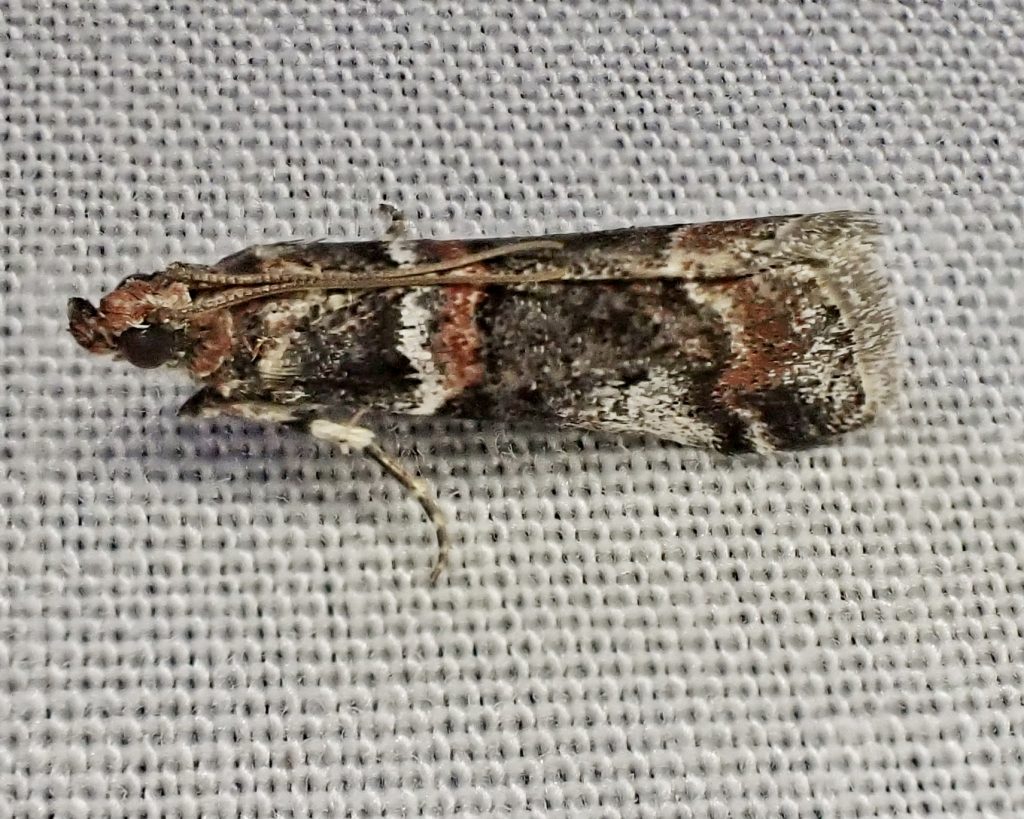
Moths that I’ve identified that are new to the tally from Thursday, July 27, 2023;
Erebidae
Zale lunata (Lunate Zale Moth)
Geometridae
Anavitrinella pampinaria
Ceratodalia gueneata
Idaea demissaria
Noctuidae
Feltia herilis
Panthea virginarius (Cascades Panthea)
Proxenus miranda
Pyralidae
Acrobasis tricolorella
Uraniidae
Callizzia amorata (Gray Scoopwing Moth)
That pushes the total to 53 thus far during Moth Week.
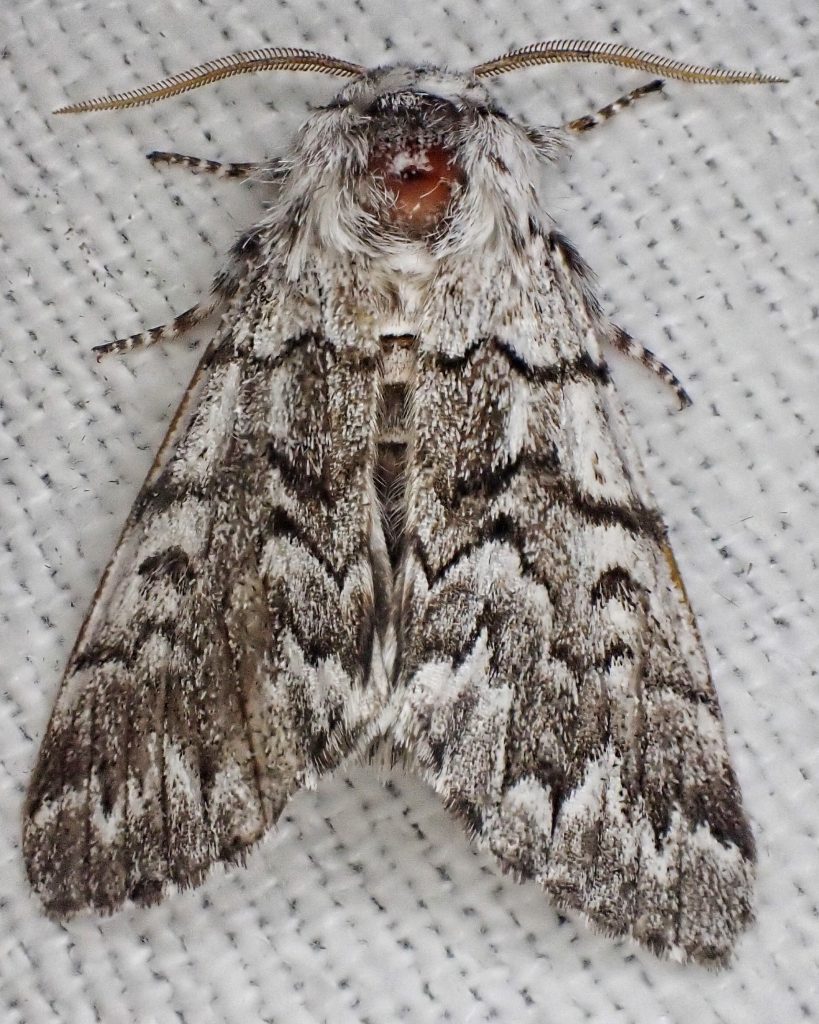
I’ve been following you through moth week. Very fun! I’m just wondering if you log your finds in iNaturalist?
I don’t, Sharon, because it is (or at least was when I tried it a couple years ago) a laborious process on my phone, which is my primary computer.
Dan,
I’ve been at a number of conferences, and heard quite a number of academic talks, where the experts stressed how useful iNaturalist observations are for them.
They have led to many new discoveries, better understanding of the biology of species, etc.
I’d like to urge you to give it another try. I find submission using the iNaturalist app (not the Seek app, which I have yet to try) to be pretty straightforward.
I’m not saying you should post everything, but perhaps post things that are not yet recorded for the county – or things for which records are sparse, or the existing images are of lesser quality, or of odd color morphs. But some folks post anything regardless of quality, unusualness, or rarity – and I have assurances from iNaturalist experts that any records are very useful.
I use the app for posting my own observations, but the web portal (either on the phone or a big screen) for following the posts of friends and colleagues.
The best part is commentary from experts, including confirmation or suggestions of other IDs. Also, there is an internal (private) email component that allows good semi-scientific communications with other experts.
Well, Mike, I do that on BugGuide. They may now have experts on iNaturalist but it used to be a ton of clueless folks, and the site left a bad taste for me. But, I’ll get the app, and see whether it’s more useful than it was.
If you’re willing to let your observations truly be scrutinized, used, updated with taxonomic changes, and organized, I would say inaturalist is a lot better than bugguide. Also, it’s not limited to “bugs.” Bugguide feels more like a club, in both good and bad ways. The app is a lot easier than the browser version on your phone. Moths would be a great place to test the app. I find it to be a huge time saver, and the data you get out of it is amazing. If you want to keep the AI and other people from letting you explore the process of identification and forgetting about it in an old-fashioned way, then this blog is probably better than inaturalist. The blog function of inaturalist is not very good at all. The observations list would be a great complement to your blog, though… There are also interesting “explore” options on inaturalist that could let you see things you didn’t know existed.
Thanks for your comments, Paul. I have been using it to some extent lately, and the range data for my profile of Phanias harfordi came almost totally from there.
That’s a good idea about adding the iNat range map/observations to the profiles. I just did that for the P. harfordi, and henceforth I’ll do that with all of them. Thanks!
And I’m glad you’re enjoying my adventures!
Hi Dan
Maybe have a look at the third message in your Mike Pamer thread – not an easy read to say the least!
Btw, I love this: they chose to come worship at the Temple of Ultraviolet I’ve erected on the Clark County side of the line, so they’re fair game.”
Yes, it does that when viewed on a phone. I’d have to have a mobile app to fix it and that costs money. It should be normal if you turn the phone sideways or view it on the computer.
Glad to hear you liked that line, Trevor!
I share that dread…. thank you for increasing awareness about the insect apocalypse
It is so disheartening to me Amanda, that so many people think ‘oh good, less bugs’ without realizing how vital they are to every ecosystem on planet.